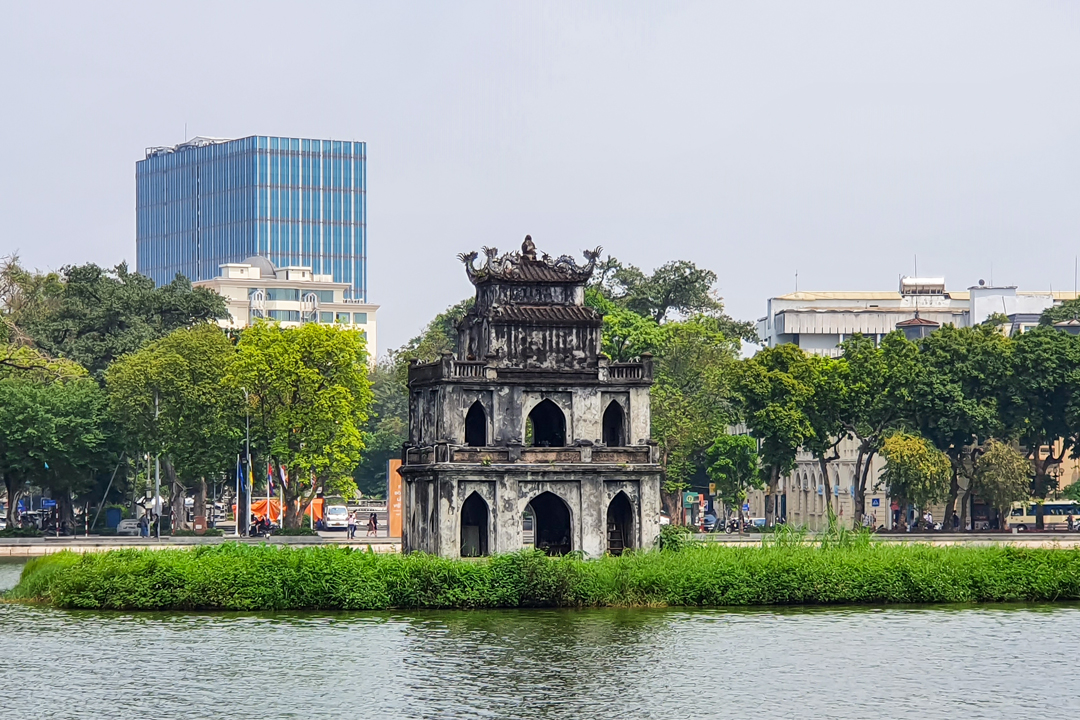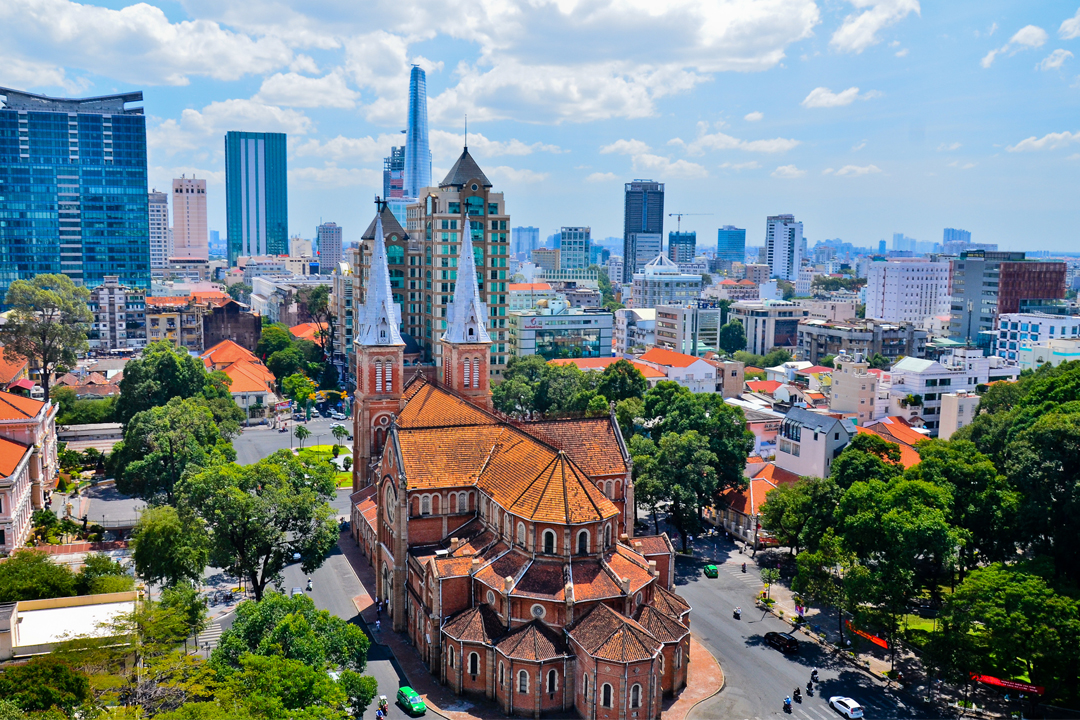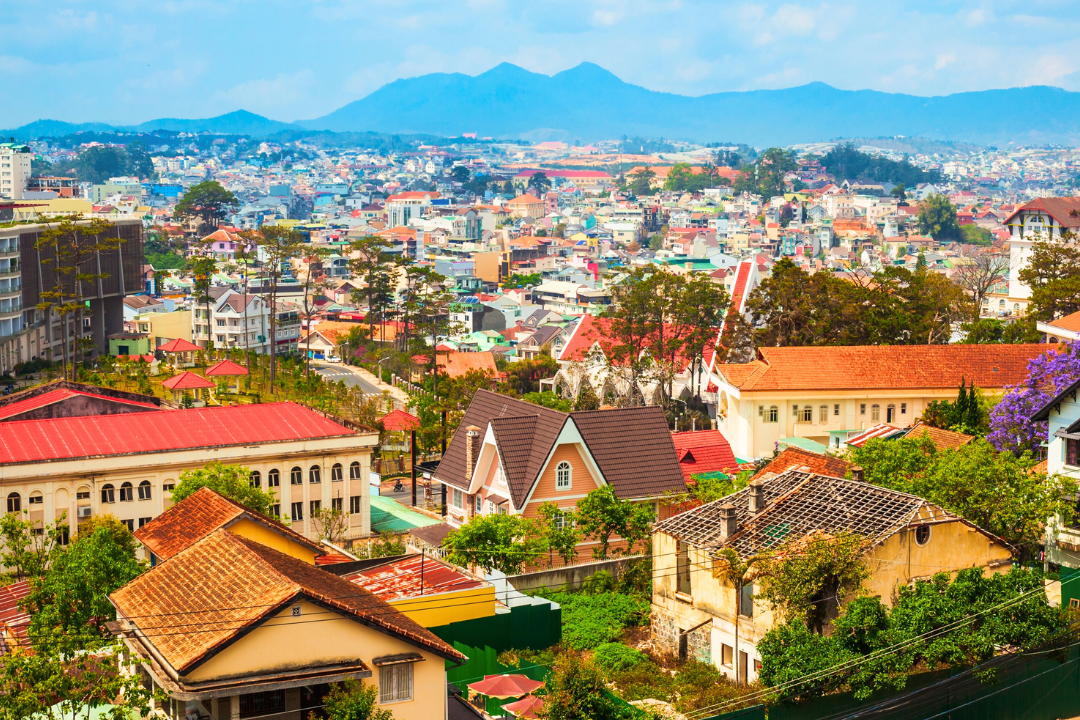Jun - 26 - 2025
Discovering the undercurrents of Vietnam's history through its skies offers more than just tales of aviation, it presents a portal into the nation's resilience and ingenuity. Vietnam People's Air Force Museum offers a rare glimpse into the nation's courageous journey through war and peace. For travelers keen on deepening their understanding of Vietnamese culture and history, this museum serves not simply as an attraction. It acts as a bridge connecting past and present narratives.
Introduction to the Vietnam People's Air Force Museum
Vietnam People's Air Force Museum in Hanoi presents the rich history of the nation’s air defense force. Through exhibits of aircraft, weapons, documents, and photos, visitors can explore the Vietnam People's Air Force's evolution since 1958. This museum offers insight into key moments during the wars against France, the United States, and other military events.
Where is Vietnam People's Air Force Museum?
Vietnam People's Air Force Museum, also known as the Air Force and Air Defence Museum, is located at 173C Truong Chinh Street, Khuong Mai Ward, Thanh Xuan District, Hanoi. The museum provides an in-depth look into the development and achievements of Vietnam’s air defense and air force over the decades. It showcases a wide range of exhibits that trace the Vietnam People's Air Force’s journey since its establishment in 1958. This museum serves as both an educational and historical site for those interested in military history and aviation.
Admission fees and opening hours of Vietnam People's Air Force Museum
Admission fees
- Ticket prices vary by visitor type.
- Children under 6 years old pay 2,000 VND for hygiene services.
- Children aged 6 and above pay 5,000 VND per ticket.
- Vietnamese adults are charged 10,000 VND per ticket.
- Foreign adults pay 30,000 VND per ticket.
- Motorbike parking costs 3,000 VND per vehicle.
- Car parking costs 20,000 VND per vehicle.
Note: Prices may change. For updates, call 069.562322.
Opening hours
- Monday to thursday: 8:00 AM - 11:00 AM and 1:00 PM - 4:00 PM.
- Friday: Only open for pre-registered groups
- Saturday, Sunday, and public holidays: 4:00 PM - 6:30 PM

The Vietnam People's Air Force Museum in Hanoi
The history behind Vietnam's Air Force Museum
The Vietnam People's Air Force Museum stands as a testament to the nation's aerial military heritage. It chronicles over six decades of development, struggle, and technological advancement.This historical institution preserves the legacy of Vietnam's air defense forces through meticulously archived artifacts, aircraft, and memorabilia. The museum's history reflects the evolution of Vietnam's military aviation sector. It grew from humble beginnings to become one of the country's most significant military heritage sites.
Chronological development of the Vietnam People's Air Force Museum
- 1958: Birth of the Vietnam People's Air Force (VPAF)
- The VPAF was officially established on May 5, 1958, marking the beginning of Vietnam's organized air defense capabilities
- Initially equipped with limited resources, the force began with just a handful of aircraft donated by allied socialist countries
- This foundation period established the roots of what would later become a formidable air force during the American War
- 1958: The Traditional House - Museum origins
- The museum's origin dates back to 1958 when it was established as the "Traditional House of the Air Defense Command", serving as the precursor to the current museum
- This establishment was focused on preserving the heritage and history of Vietnam's air defense and air force forces
- In 1999, this traditional house merged with the Air Force, further developing into the combined Air Defense - Air Force Museum known today
- 1989: Expansion to the South
- The Ho Chi Minh City branch opened, creating a second location to showcase Southern air force operations
- This expansion reflected the post-reunification effort to present a comprehensive national air force history
- The Southern museum focused particularly on air defense operations during the later stages of the American War
- 2004: Modern museum construction
- Construction commenced on the current purpose-built museum complex in Hanoi
- The project represented a significant investment in preserving Vietnam's aviation military heritage
- Advanced museum design principles were incorporated to better showcase large aircraft and technical exhibits
- August 28, 2007: Grand inauguration
- The official opening ceremony of the Vietnam Air Defense - Air Force Museum in Hanoi marked its transformation into a world-class military museum
- Senior government and military officials attended the ceremony, highlighting the museum's national importance
- The event coincided with exhibitions commemorating key air force victories and achievements
- Present: A comprehensive collection
- Today's museum houses over 3,000 indoor artifacts, ranging from personal items of famous pilots to sophisticated radar equipment
- The outdoor exhibition area displays dozens of historic aircraft, including MiG fighters, transport planes, and helicopters
- Interactive exhibits and multimedia presentations have been added to enhance visitor experience and educational value
This chronological development reflects Vietnam's commitment to preserving its aerial military heritage. It also aims to educate future generations about the significant role the Air Force played in the nation's struggle for independence and sovereignty.
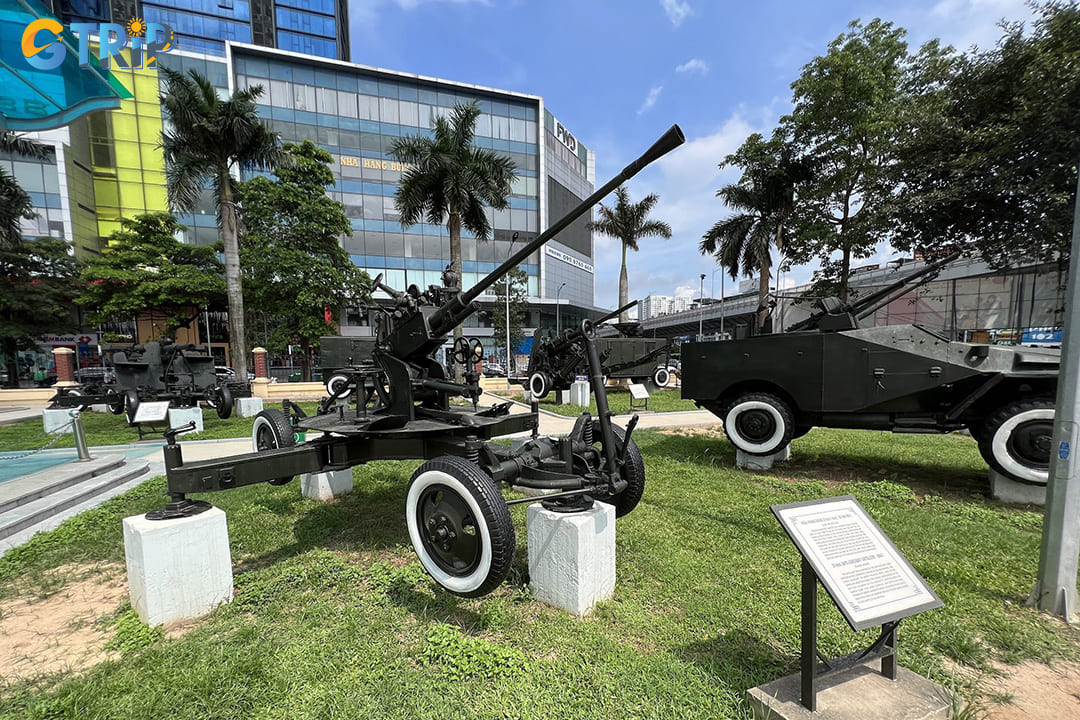
The Vietnam People's Air Force Museum showcases Vietnam's aerial military history, evolving since 1958 to honor the Air Force's role in the nation's fight for independence.
What exhibitions should you explore at Vietnam People's Air Force Museum?
The Vietnam People's Air Force Museum houses an impressive collection that tells the story of Vietnam's aerial defense history through authentic artifacts and detailed exhibitions. Visitors can explore both outdoor and indoor spaces featuring aircraft, weaponry, and personal effects that witnessed pivotal moments in Vietnam's military aviation history. The museum offers a comprehensive look at the technological evolution and heroic chapters of the country's air defense forces.
Exterior exhibitions
The sprawling outdoor exhibition area covers over 15,000 square meters of fascinating military history. Here, visitors can examine 102 large-scale artifacts related to Vietnam's Air Force and Air Defense forces. Each piece stands as a silent witness to the nation's struggles for independence and sovereignty.
The outdoor exhibits are thoughtfully organized into four main collections to help visitors understand the progression of Vietnam's air defense capabilities. These collections include anti-aircraft artillery, aircraft, radar systems, and missiles used during conflicts with French colonialists, American forces, and in border defense operations from 1979 - 1989.
Among the most notable outdoor exhibits are:
- 37mm anti-aircraft gun that saw action in the historic Dien Bien Phu campaign of 1954
- 90mm anti-aircraft gun used in the first battles against American forces in 1964
- Mi-4 helicopter that once transported President Ho Chi Minh on official duties
- P-35 radar system that played a crucial role in detecting B-52 bombers and providing early warnings
- Missile launcher that successfully downed the first B-52 bomber in 1972
- MiG-21 fighter aircraft flown by pilot Pham Tuan when he shot down a B-52 bomber
- A-37 aircraft used during the 1975 bombing raid on Tan Son Nhat Airport
- Su-22 fighter jet that served in national air defense operations
- Wreckage displays from various downed enemy aircraft, preserving evidence of successful missions
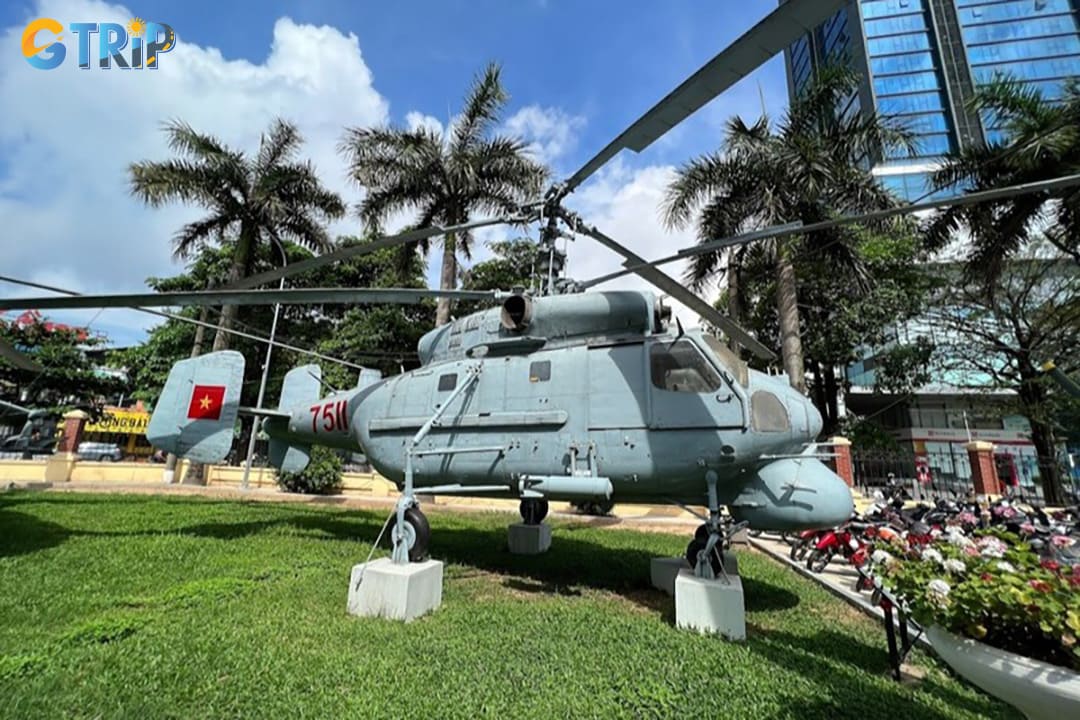
The museum’s outdoor area displays historic aircraft, missiles, and radar systems that highlight Vietnam’s air defense legacy
Interior exhibitions
The museum's indoor display area spans two floors covering more than 3,000 square meters. This space houses nearly 3,000 artifacts, photographs, and documents that chronicle the evolution of Vietnam's Air Defense-Air Force. The interior exhibitions are meticulously arranged according to historical timelines, divided into 8 major headings and 4 fixed thematic displays.
The chronological exhibitions begin with the resistance against French colonialism (1946–1954). They highlight the formation of Vietnam's first air defense units and their contributions to the Dien Bien Phu victory. The next section covers the critical development period (1954 - 1964) following the Geneva Agreement, showcasing the expansion of forces and advancements in training and weaponry.
Particularly compelling are the exhibits dedicated to the American War period, including:
- The victories in two destructive air campaigns against North Vietnam (1964 - 1972)
- The legendary "Hanoi - Dien Bien Phu in the air" battle of December 1972
- The role of the air forces in the Southern Liberation Offensive of 1975
- The famous Tan Son Nhat airport battle that helped secure final victory
| Historical period | Key exhibits | Historical significance |
|---|---|---|
| 1946 - 1954 | Anti-aircraft guns from French forces, 367 Artillery Regiment artifacts | Formation of air defense during anti-French resistance |
| 1954 - 1964 | Training equipment, early aircraft | Post-Geneva Agreement development period |
| 1964 - 1972 | Ham Rong victory artifacts, Uncle Ho's badges for pilots | First Vietnamese air victories against US forces |
| December 1972 | B-52 wreckage, pilot medals | "Hanoi - Dien Bien Phu in the air" campaign |
| 1975 | A-37 aircraft parts, battle maps | Southern Liberation and Tan Son Nhat airport battle |
| 1977 - 1999 | Border defense equipment, modernization examples | National construction and protection period |
The museum also features several fixed thematic exhibitions that explore broader contexts:
- "Solidarity of the militia - strength from the ground", highlighting the crucial contributions of civilians and militia forces to Vietnam’s air defense efforts.
- "International solidarity" documenting the vital support from allies, especially the Soviet Union and China, which helped Vietnam develop its air defense capabilities.
- "Friendship cooperation in ASEAN" explores regional military relationships and cooperation within Southeast Asia.
- "International cooperation space" celebrating pilot Pham Tuan’s historic 1980 space mission, including exhibits such as the re-entry module of the Soyuz 36 spacecraft.
Visitors shouldn't miss the special experience areas, including an immersive model of the 12-day and night campaign of December 1972 and the landing compartment of the 36 spacecraft. The final section presents the modern Air Defense - Air Force, showing its evolution into a revolutionary, regular, elite, and modernized force prepared to defend Vietnam's sovereignty in contemporary times.
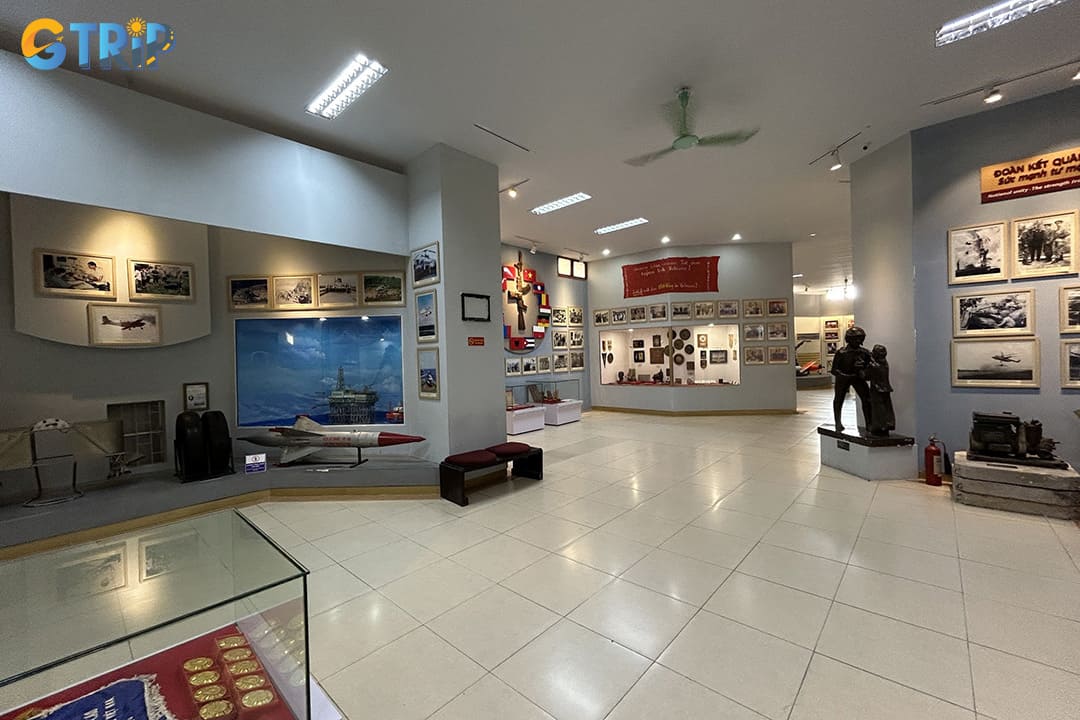
The museum’s indoor exhibits trace Vietnam’s Air Force history with thousands of artifacts, and highlights like the 1972 air campaign and Pham Tuan’s space mission
Things to do at Vietnam People's Air Force Museum
The Vietnam People's Air Force Museum offers visitors much more than static displays of historical aircraft. Beyond admiring the impressive collection, there are several engaging activities that make a visit truly memorable. From learning about Vietnam's surprising space exploration history to interactive experiences and photo opportunities, here's what you can do during your visit.
Participate in interactive elements
Several areas of the museum feature hands-on exhibits designed to enhance visitor understanding of aviation principles and military technology. Flight simulators allow guests to experience what it's like to pilot different aircraft from Vietnam's air force history. These simulators range from basic controls to more sophisticated systems that replicate actual flight conditions.
The museum offers interactive touchscreen displays that provide detailed information about aircraft specifications, historical missions, and technological advancements. Younger visitors particularly enjoy the cockpit experiences, where they can sit in replicated aircraft cockpits. These interactive stations include functional control panels, communication equipment, and navigation systems that visitors can manipulate.
Interactive exhibits:
- Flight simulators with varying difficulty levels
- Touchscreen information kiosks with multilingual options
- Replica cockpits with functional controls and instruments
- Guided demonstration sessions (available at scheduled times)
- Audio stations featuring recordings of veteran pilots sharing their experience
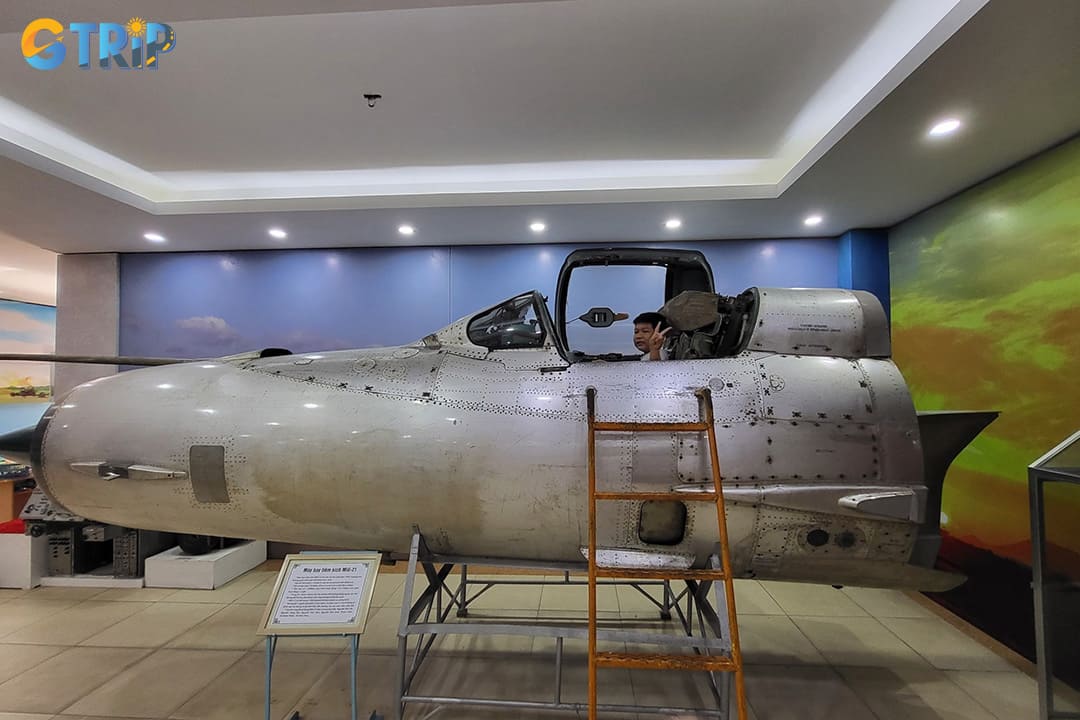
Visitors can explore flight simulators, interactive touchscreens, and replica cockpits with functional control panels, offering deeper insight into Vietnam’s aviation history
Learn about Vietnamese cosmonaut history
The museum proudly showcases a fascinating exhibit dedicated to Vietnam's unexpected connection to space exploration. Many visitors are surprised to discover Vietnam's participation in the Soviet-led Interkosmos program during the Cold War era. The display features authentic artifacts from this collaboration, including space equipment and personal items.
The highlight is undoubtedly the exhibit dedicated to Pham Tuan, the first Vietnamese person to travel to space. Visitors can see remnants of the Soyuz 37 spacecraft that carried him to the Salyut 6 space station in July 1980. The museum presents his space suit, training documents, and photographs documenting this historic achievement.
Information panels throughout this section explain how Pham Tuan conducted scientific experiments while orbiting Earth for eight days. His journey represents a significant moment in Vietnam's scientific history, demonstrating the country's technological aspirations beyond military aviation development.
Take photos with many iconic military transports
The outdoor aircraft park provides excellent photography opportunities with Vietnam's most historically significant military aircraft. Visitors can capture close-up images of MiG fighters, Soviet-era helicopters, and transport aircraft displayed on raised platforms. The elevated positioning allows for unobstructed views from multiple angles.
If you're an art enthusiast, the Vietnam National Fine Arts Museum, about 4km from the Vietnam People's Air Force Museum, displays images and paintings from Vietnam's ancient past. Alternatively, the Vietnam Museum of Ethnology, roughly 6km away, exhibits artifacts reflecting the cultures of Vietnam's various ethnic groups.
Photography enthusiasts appreciate the unrestricted access to walk around most aircraft displays. This provides opportunities to capture detailed shots of cockpits, weapons systems, and insignia that tell the story of Vietnam's aerial military history. The aircraft are arranged against Hanoi's skyline, creating dramatic backdrops for memorable photographs.
Popular photography locations include:
- The iconic MiG-21 fighter jet display near the entrance
- Soviet-made Mi-8 helicopter with its cargo doors open
- Preserved F-5E Tiger II (captured from South Vietnamese forces)
- The massive Ilyushin Il-28 bomber display
- Air defense systems, including surface-to-air missile launchers
- The U.S. aircraft wreckage collection from the American War period
Early morning or late afternoon visits provide the best lighting conditions for dramatic photographs of these historic military machines. The museum staff is generally accommodating to photographers who want to capture these powerful symbols of Vietnam's aviation history.
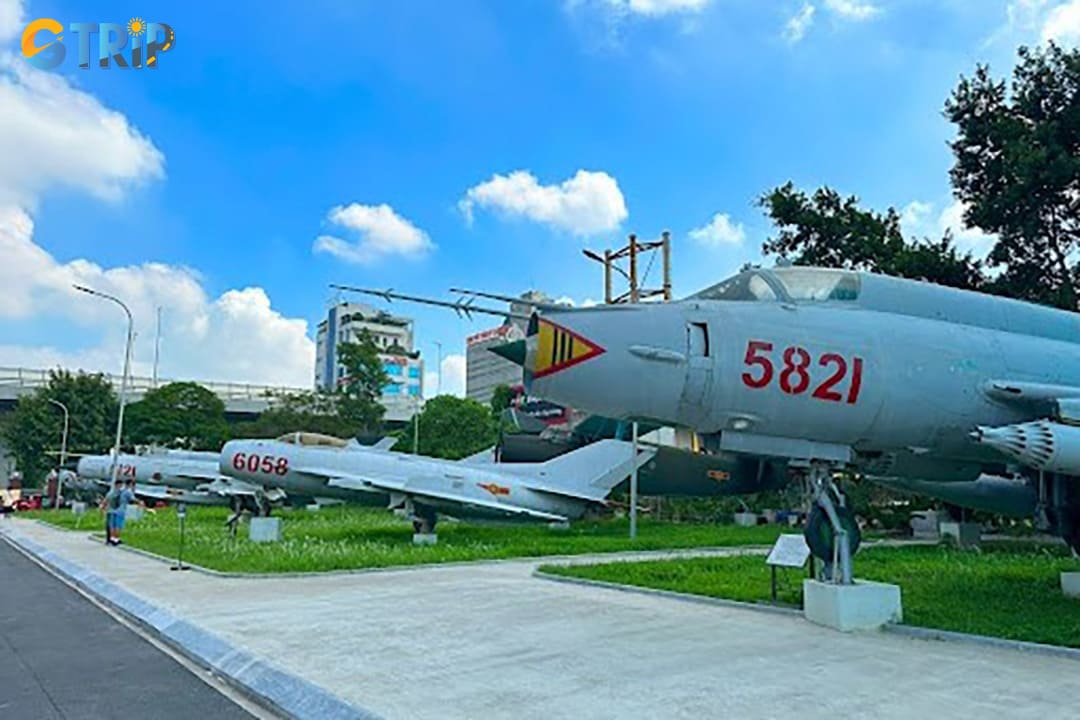
The outdoor aircraft park offers great photo ops with historic planes and dramatic backdrops, best shot in early morning or late afternoon light.
How to get to Vietnam People's Air Force Museum?
Reaching the Vietnam People's Air Force Museum in Hanoi is straightforward, with several transportation options available. The museum is located in the Ba Dinh District, making it accessible from most parts of the city. Visitors can choose between public transport, ride-hailing services, or private vehicles depending on their budget and convenience preferences.
By taxi or ride-hailing apps
Getting to the Vietnam People's Air Force Museum by taxi offers convenience and comfort, especially for those unfamiliar with Hanoi's streets. Most taxi drivers in Hanoi recognize this prominent landmark when you mention "Bao tang Phong khong - Khong quan". Taxis in Hanoi use meters with rates typically ranging from 11,000 VND to 20,000 VND per kilometer.
Ride-hailing apps provide a modern alternative with predetermined fares and no language barriers. Grab and Be are the two most popular ride-hailing services in Hanoi, offering both car and motorbike options. The apps display fare estimates before you confirm the ride, eliminating price negotiations.
Standard ride-hailing fares to the museum:
- GrabCar (4-seater): VND 250,000 - 350,000 ($10 - $15)
- GrabCar (7-seater): VND 300,000 - 450,000 ($12 - $19)
- GrabBike: VND 80,000 - 150,000 ($3.50 - $6.50)
Prices may fluctuate based on distance, time of day, and current demand. During peak hours or rainy seasons, expect slightly higher fares due to surge pricing.

Taking a taxi or using popular ride-hailing apps like Grab and Be offers a convenient, meter-based
By car or motorbike
Exploring Hanoi via a rented vehicle gives you independence and flexibility to visit the Air Force Museum at your own pace. Many tourists choose for motorbikes, the most popular transportation method among locals, offering maneuverability through Hanoi's sometimes congested streets.
Motorbike rentals typically cost between 150,000 VND to 200,000 VND (about $5 to $8) per day for standard models. Higher-end or automatic scooters may cost 250,000 - 350,000 VND daily. Most rental shops require a passport as a security deposit and provide helmets with the rental.
For families or larger groups, car rentals start from roughly 580,000 VND per day (approximately $22) for economy models. Luxury options or vehicles with drivers cost significantly more, ranging from 900,000 - 2,000,000 VND daily. Parking is available near the museum entrance for about 10,000 - 20,000 VND for motorbikes and 30,000 - 50,000 VND for cars.
By bus
Hanoi's extensive public bus network provides the most economical way to reach the Vietnam People's Air Force Museum. Several bus routes pass near the museum, making it accessible from different parts of the city. The buses are air-conditioned and run frequently throughout the day.
Visitors can take bus number 12, 16, 19, or 24 to reach the vicinity of the museum. Bus number 16 is particularly convenient if you're coming from the Old Quarter area. Look for the "Bao tang Phong khong - Khong quan" stop or ask the bus conductor to notify you.
Bus fares in Hanoi typically range from 7,000 to 9,000 VND (approximately $0.30 to $0.40) per journey regardless of distance. Purchase tickets directly from the conductor after boarding. Buses operate from approximately 5:00 AM until 10:00 PM, with frequency decreasing in the evening hours.
The walk from the nearest bus stop to the museum entrance is typically less than 10 minutes. This option offers a glimpse into local life and is ideal for budget-conscious travelers with flexible schedules.
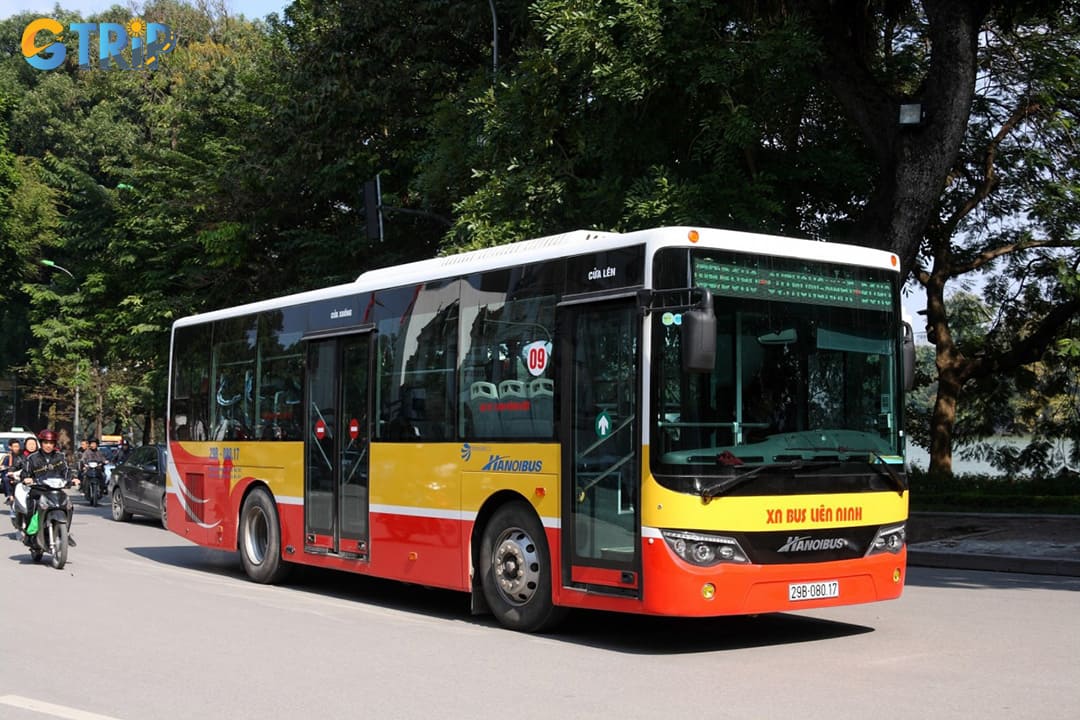
Hanoi’s public bus system offers a budget-friendly and convenient way to reach the Vietnam People's Air Force Museum
Regulations for visitors when visiting Vietnam People's Air Force Museum
Understanding the museum's regulations ensures both visitor safety and preservation of its historical artifacts. The Vietnam People's Air Force Museum houses irreplaceable military aviation treasures that require special care. Before planning your visit, familiarize yourself with these important guidelines that all visitors must follow:
- Follow museum personnel instructions
- Museum staff are trained professionals whose directions must be followed at all times
- Specific areas may have additional restrictions or special viewing procedures
- Staff may limit access to certain exhibits for preservation or safety reasons
- Follow evacuation procedures immediately if announced by museum personnel
- No smoking policy
- Smoking is absolutely prohibited throughout the entire museum premises
- This includes e-cigarettes and vaping devices
- The policy protects sensitive historical artifacts from damage
- Designated smoking areas may be available outside the museum grounds
- Food and beverage restrictions
- No food or drinks are allowed inside exhibition areas
- Water in closed containers may be permitted in designated areas only
- A small cafe may be available in a separate section of the museum
- All trash must be disposed of in designated waste bins
- Photography guidelines
- Personal photography is permitted for non-commercial use
- Flash photography is strictly prohibited as it can damage sensitive materials
- Tripods and professional equipment require prior permission
- Some exhibits may have specific no-photography restrictions
- Prohibited items
- Weapons of any kind (including pocket knives)
- Explosive materials or flammable substances
- Large bags and backpacks (storage lockers may be available)
- Pets (except certified service animals)
- Child supervision requirements
- Children under 12 must be accompanied by an adult at all times
- Parents/guardians are responsible for their children's behavior
- No running, climbing, or touching exhibits unless specifically designated as interactive
- Museum staff reserve the right to ask disruptive visitors to leave
- Dress code expectations
- Respectful attire is required as this is a memorial site
- Military uniforms from foreign countries may require prior approval
- Appropriate footwear must be worn for safety reasons
- Hats should be removed in memorial sections as a sign of respect
- Operating hours compliance
- Visitors must exit exhibition areas 15 minutes before closing time
- Last admission is typically one hour before closing
- Special events may alter regular visiting hours
- The museum is closed on certain national holidays
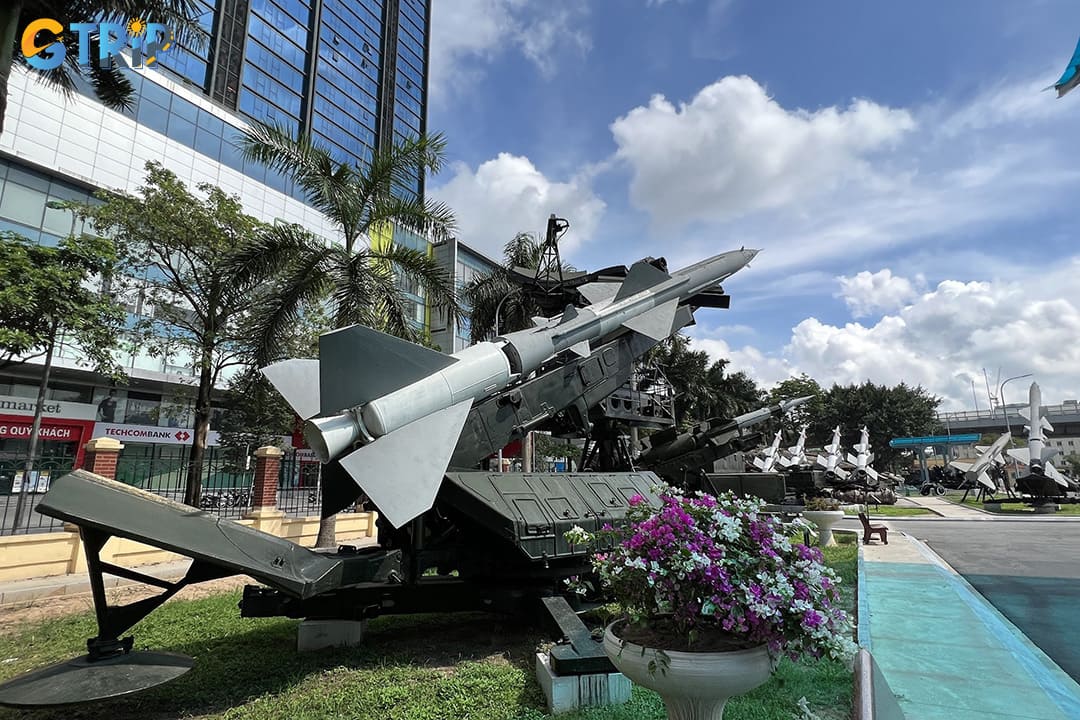
Visitors to the Vietnam People's Air Force Museum must follow important regulations covering conduct, prohibited items, dress code, photography, and operating hours.
Exploring the Vietnam People's Air Force Museum offers a unique glimpse into the history and valor of Vietnam's air force. It is a must-visit for those intrigued by military history and aviation. Through its exhibits, visitors forge a deeper connection to the stories of bravery and innovation that have shaped the nation's skies. This journey not only enriches your understanding but also inspires reflection on the resilience that defines Vietnam. Should you feel compelled to delve more deeply into this fascinating heritage or seek out further adventures in Vietnam, keep an eye out for more insightful guides from GTrip. Let this experience ignite your curiosity and fuel your future travel dreams, confident in the knowledge that every step you take broadens your horizons-one museum visit at a time.

